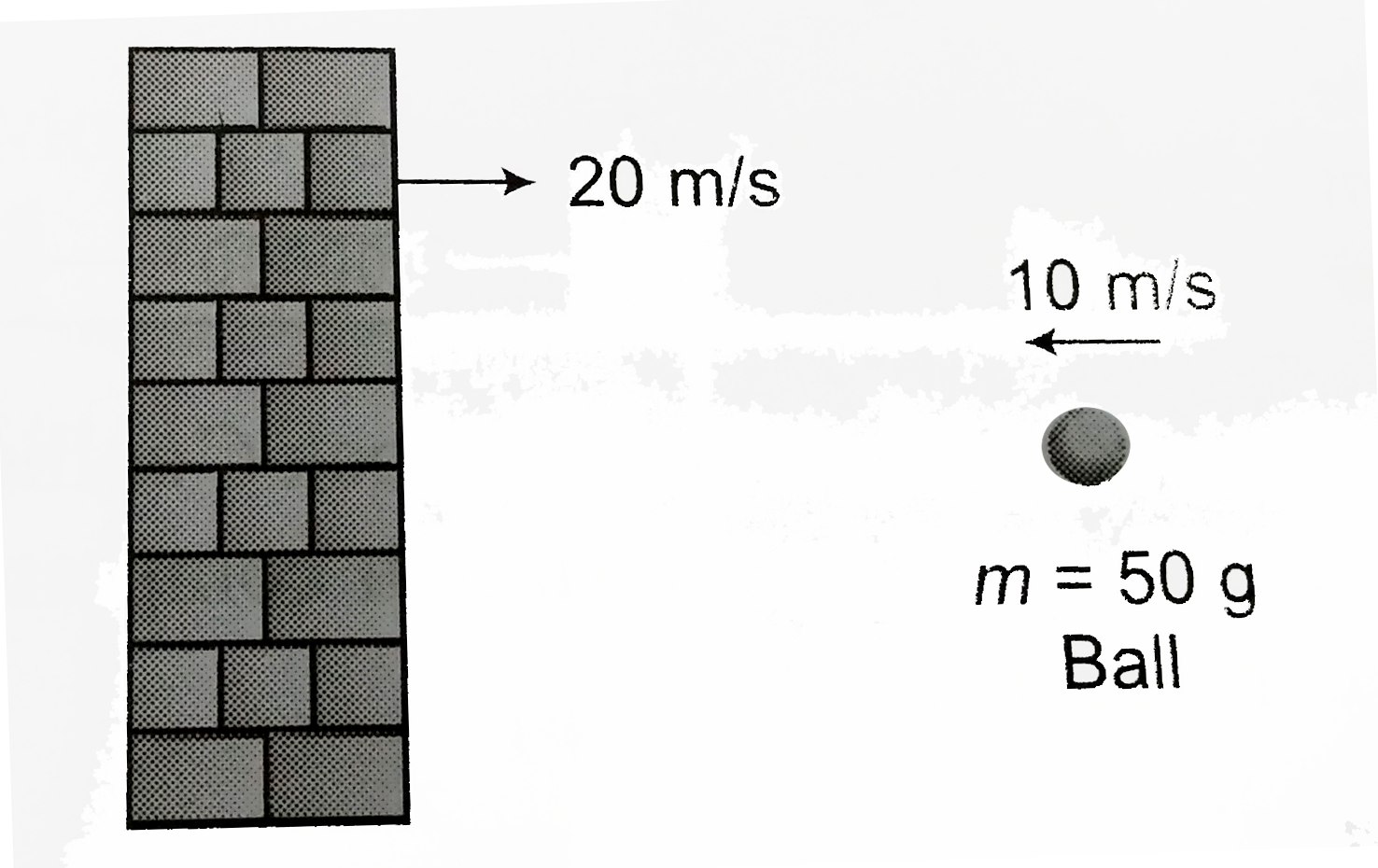We know how by neglecting the air resistance, the problems of projectile motion can be easily solved and analysed. Now we consider the case of the collision of a ball with a wall. In this case the problem of collision can be simplified by considering the case of elastic collision only. when a ball collides with a wass we divide its velocity into two components, one perpendiclar to the wall and other parallel to the wall. If the collision is elastic then the perpendicular component of velocity of the ball gets reversed with the same magnitude.

The other parallel component of velocity will remain constant if wall is given smooth.
Now, let us take a problem. Three balls A,B, and C are projected from ground with same speed at same angle with the horizontal. The ball A,B and C collide with the wall during their flight in air and all three collide perpendicularly with the wall as shown in figure.

The vertical component of velocity of balls wiht which they are projected is
20m/s
10m/s
10√3m/s
Undeterminable
The correct Answer is:A
Vertical component =usinθ=20m/s
Similar Questions
Show that in case of one dimensional elastic collision of two bodies, the relative velocity' of sepa¬ ration after the collision is equal to the relative velocity of approach before the collision
View SolutionCalculate the pressure exerted by a flux of particles striking a wall at an angle α to its normal. Consider the case of elastic collisions. The particle concentration is n.
View Solution
Knowledge Check
We know how by neglecting the air resistance, the problems of projectile motion can be easily solved and analysed. Now we consider the case of the collision of a ball with a wall. In this case the problem of collision can be simplified by considering the case of elastic collision only. when a ball collides with a wass we divide its velocity into two components, one perpendiclar to the wall and other parallel to the wall. If the collision is elastic then the perpendicular component of velocity of the ball gets reversed with the same magnitude.

The other parallel component of velocity will remain constant if wall is given smooth.
Now, let us take a problem. Three balls A,B, and C are projected from ground with same speed at same angle with the horizontal. The ball A,B and C collide with the wall during their flilght in air and all three collide perpendicularly with the wall as shown in figure.

If the total time taken by the ball A to fall back on ground is 4 seconds and that by ball B is 2 secons. Then, the maximum height attained by ball B from ground will beA15mB5mC3mD25mIn case of elastic collision,at the time of impact
ATotal K.E of colliding bodies is conservedBtotal K.E. of colliding bodies is conservedCtotal K.E. of colliding bodies decreasesDtotal momentum of colliding bodies decreasesIn an elastic collision between smooth balls :
AThe kinetic energy remain constantBThe linear momentum remains constantCThe final kinetic energy is equal to the initial kinetic energyDThe final linear momentum is equal to the initial linear momentum
Ideal gas molecules experiences
-Elastic collisions with walls of container
-Inelastic collisions with walls of container
-Elastic collision with one wall and inelastic collision with other wall
-No collisions with walls
View SolutionA ping-pong ball strikes a wall with a velocity of 10ms−1. If the collision is perfectly elastic, find the velocity if ball after impact
View SolutionConsider the situation as shown in the diagram , the ball strikes the wall normally and the collision is elastic , the change in the kinetic energy of the ball is

View SolutionA ball rebounds after colliding with the floor, then in case of inelastic collision-
View SolutionA ping-pong ball strikes a wall with a velocity of 10ms−1. If the collision is perfectly elastic, find the velocity if ball after impact
View Solution

